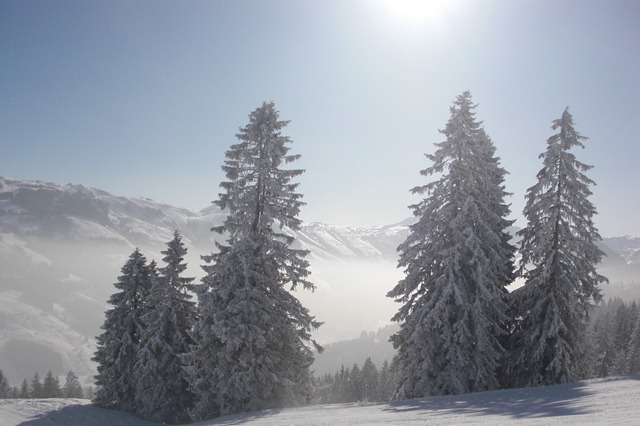 This post is in part a memory aid but it may be interesting to other amateur photographers, and organisational obsessives.
This post is in part a memory aid but it may be interesting to other amateur photographers, and organisational obsessives.
My scheme for holidays and walks out is to take cameras (Canon 400D, Casio Exilim EX-S10), sometimes a video camera (Canon Legaria FS200) and a Garmin GPS 60 which I use to provide information for geotagging photos rather than navigation, although I once used it as an altimeter to find the top of a cloud covered Lake District mountain. Geotagging is the process of labelling a camera image with the location at which it was taken.
I save images as JPEG, I should probably use RAW format on the SLR but the workflow is more complicated and I rarely do anything particularly advanced with images after I’ve taken them other than cropping, straightening and a little fiddling with contrast. Once home I save all the images from a trip to a directory whose name is as follows:
Z:\My Pictures\[year]\[sequence number] – [description] – [date]
So for my recent skiing trip:
Z:\My Pictures\2011\003 – Hinterglemm – 29jan11
I leave the image file names unaltered. Padding the sequence number with zeroes helps with sorting. The idea of this is that I can easily find photos of a particular trip just using the “natural” ordering of the file system, I don’t rely on 3rd party software and I’m fairly safe from the file system playing sneaky tricks with creation dates. The Z: drive on my system is network attached storage, so it can be accessed from both my desktop and laptop computers. I back this up to the D: drive on my desktop PC using Syncback and I also copy it periodically to a portable drive which I keep at work. Syncback synchronises the files in two directories, I use this in preference to “proper” backup because it doesn’t leave my files in a big blob of an opaque backup format (I got burnt by this when using NTbackup in the past). The drawback is that I can’t go back to a snapshot in time but I’ve never felt the need to do this.
In addition to the images, I also save the GPS file in GPX format to the directory, this is downloaded and converted using Mapsource which is Garmin’s interfacing software. GPX is a format based on XML so is easy to read programmatically and even by humans. I do little inside Mapsource other than converting, and for a multi-session trip, stitching all the tracks together into a single file. Another handy tool in this area is GPSBabel which converts GPS data between a multitude of formats.
I use Picasa for photo viewing and labelling: it’s free, it has basic editing functions, it allows labelling and geotagging of photos in a fairly open manner and it does interesting stuff like face recognition too. As well as all this it links to Google’s web albums, so I can share photos, and it talks nicely to Google Earth.
Both geotagging and labelling images use EXIF (Exchangeable image file format) this is a way of adding metadata to images; nice because it’s a standard and the data goes in the image file so can’t get lost. EXIFtool is a very useful command-line tool for reading and writing EXIF data, and it can be integrated into your own programs. Software like Picasa, and websites such as Flickr are EXIF aware so data saved in this format can be visible in a range of applications.
It is possible to geotag photos manually with Picasa via Google Earth but I’ve collected a GPS track so this is not necessary. There are free software packages to do this but I’ve written my own for fun. The process is fairly simple: the GPS track has a timestamp associated with each location point and the photos from the camera each have a timestamp. All the geotagging software has to do is find the GPS point with the timestamp closest to that of the photo and write that location data to the image file in the appropriate EXIF fashion. The only real difficulty is matching up the offset between image time and GPS time – for this I take a picture of my GPS which shows what time it thinks it is and label this “GPS”.
In fact I usually label photos after they have been geotagged: photos can be exported from Picasa as a Google Earth compatible KMZ file and then upload into Google Earth along with the GPS track in GPX format making it possible to see where you were when you took the photo, which makes labelling easier.
I use www.gpsvizualiser.com to create images of GPS tracks on top of satellite images, this is a bit more flexible than just using Google Earth, I must admit to being a bit bewildered with the range of options available here. Below is an example where height is coded with colour.
As I go around I sometimes take sets of images to make a panorama. The final step is to stitch together these multiple images to make single, panoramic views, I now use Microsoft Image Composite Editor to do this, it preserves the EXIF data of the input image and does a nice auto-crop. My geotagging program flags up images that were taken close together in time as prospective panoramic images. The image below is a simple to image panoramic view (from Hinterglemm)
I mentioned video in the title: at the moment I’m still a little bemused by video. I use the same directory structure for storing videos as I do for pictures but I haven’t found album software I’m happy with or a reliable way of labelling footage – Picasa seems promising although the playback quality is a bit poor. ffmpeg looks like a handy programming tool. Any suggestions welcome!



